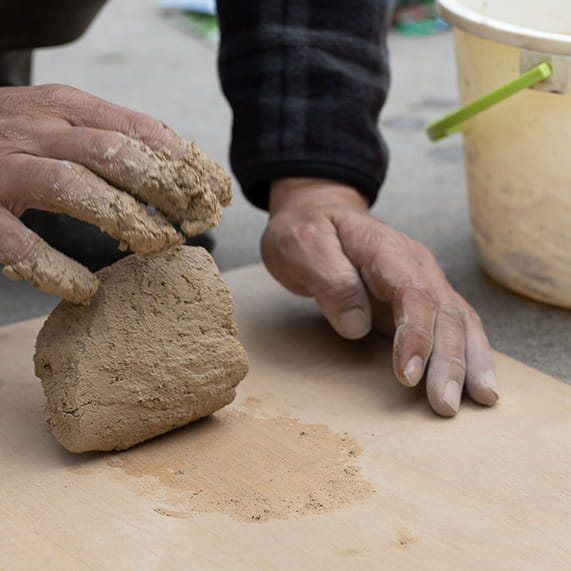Seed Pellets
The pellets were first created by our founder and farming evangelist Masanobu Fukuoka.
Their shape reflects a comprehension of nature and is embraced by nature.
Seed pellets are the future
The future lives in the depths of our hearts
Our hearts return to the soil with the calm of the evening

Masanobu Fukuoka traveled the world to understand nature, talk about nature, and apply his philosophy of nature.
The seed pellet clarifies who we as humans are, and is the keyword in his philosophy.
He mixed as many plant seeds as possible into pellets made from clay and dried them. He would then disseminate these seed pellets, which hold new life, over the ground.
Occasional rain showers caress the pellets’ surfaces, and nature selects which seeds will sprout and carve out tomorrow.
The seed pellets are a part of nature, which is difficult for human insight to grasp. They are an infinite microcosm of the cycle of life, which only nature itself understands. The seed pellets led to Masanobu being awarded the Magsaysay Prize, which is often referred to as “Asia’s Nobel Prize.”
How to make seed pellets
How to make seed pellets
Learn more about Masanobu Fukuoka Natural Farm’s philosophy about seed pellets and how to make them.










